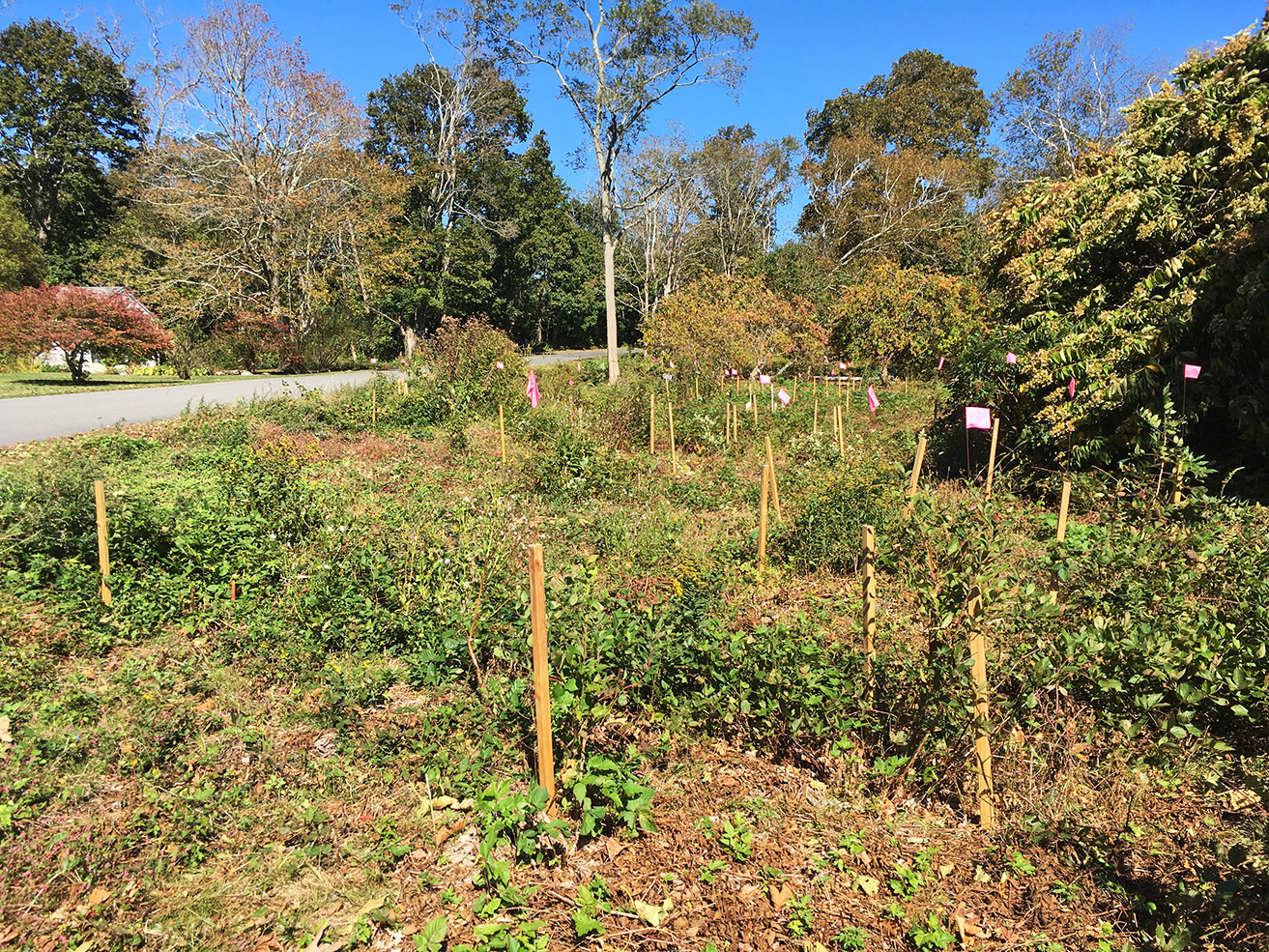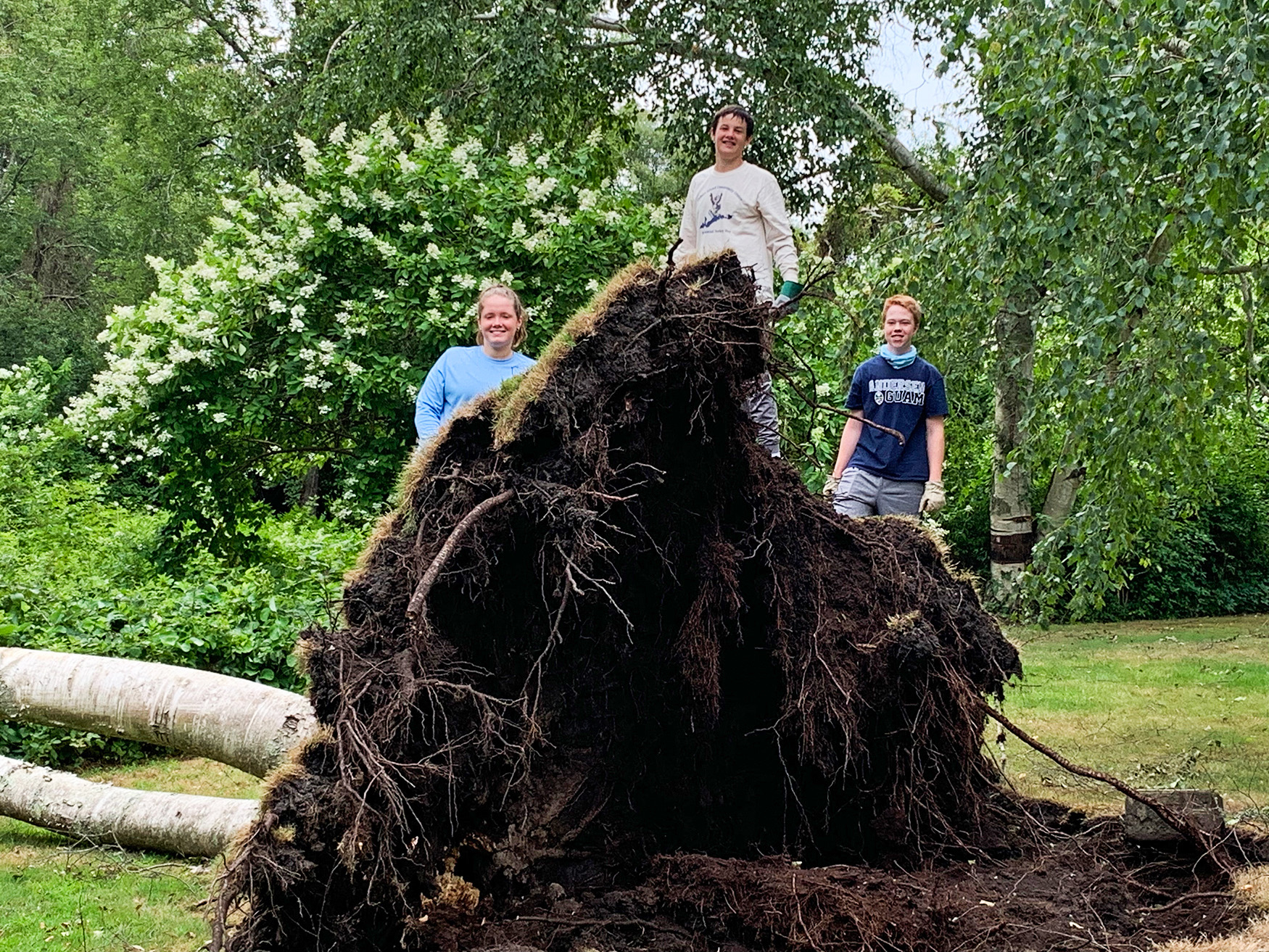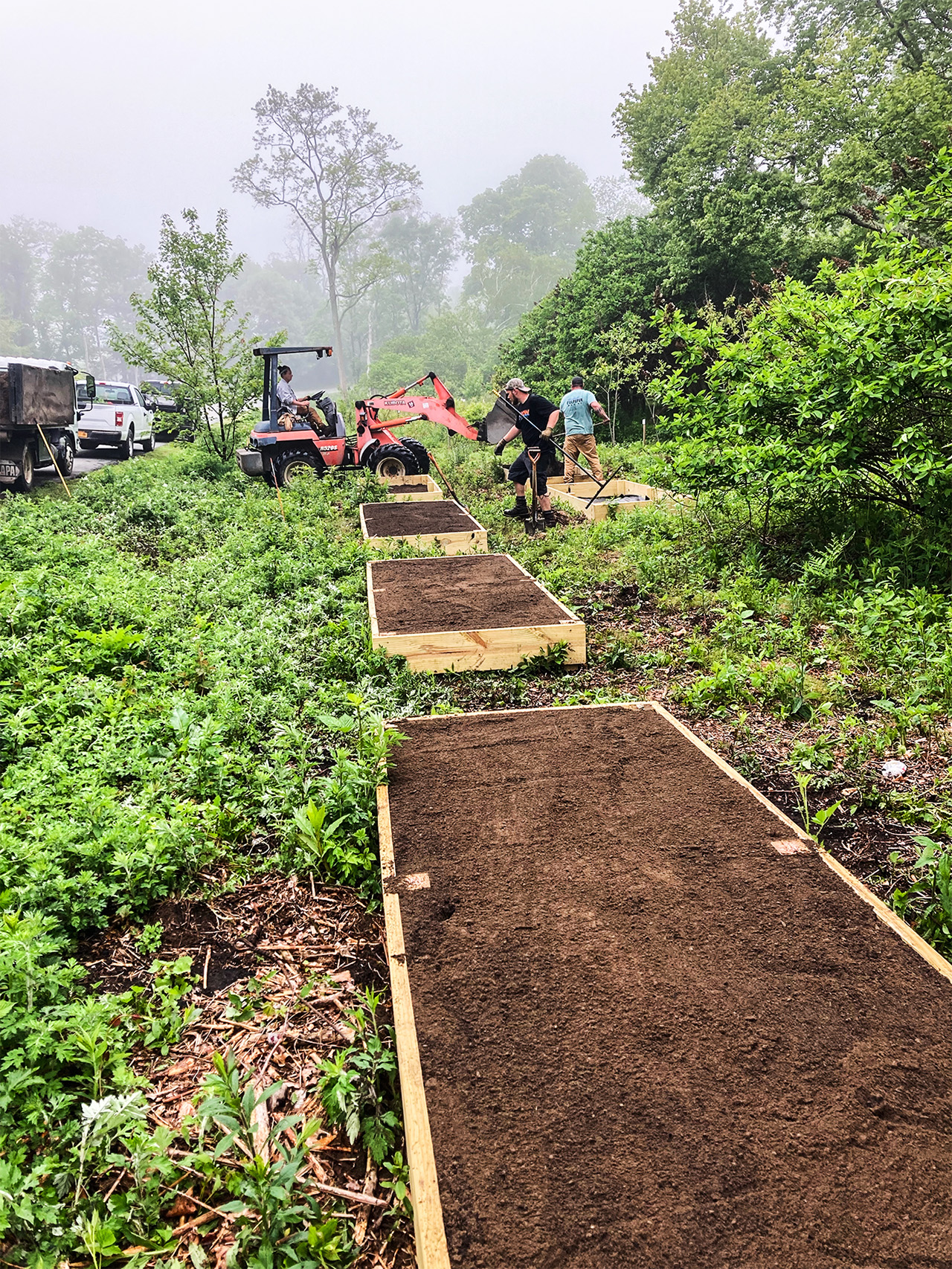Restoring Biodiversity at H. Lee Ferguson, Jr. Wildlife Sanctuary
by Jack Schneider
Undisturbed natural communities are dynamic, interdependent relationships between plant and animal species that tend towards long-term stability and productivity. Once broken, the restoration of these intricate associations requires planning, work, patience, luck, money, and, above all, leadership fueled by persistent passion. This is one such restoration story.
The Lee Ferguson Sanctuary’s location adjacent to the Museum, combined with its (mostly!) gentle terrain makes it accessible to diverse visitation, affording users a convenient opportunity to experience nature and a variety of plants and animals within easy walking distance of Town. The dark, shady, moss-lined paths tunneling through the archways of flowering hydrangea conjure Arthur Rackham’s fantastical illustrations. The Sanctuary possesses attributes important to wildlife: a variety of habitats, formidable trees, a dense understory, a freshwater pond, and food—in part provided at the Museum feeding station on the rear deck.
But the Sanctuary has severe shortcomings, too. The grounds have been shaped by and are recovering from past clearing and landscaping activities. Such land use history favors opportunistic, aggressive, non-native plants that overrun the native plant community, compromise the natural food web, and present what many consider to be an eyesore. This condition of dominant invasive species concerned the Museum’s board members, who wanted to reverse this successional trend.
Facilitated by board member Megan Raymond, this restoration process began in 2017 with the purchase of a diverse mix of native species that were planted in the “old field” along Bell Hill Ave. Initially, these new plantings faced stiff resistance from non-native species that had become entrenched through pervasive root networks, abundant seed production, and a prolonged growing season. The new native plantings were becoming buried by blackberry, hydrangea, etc.
In 2019, board member Terry McNamara and his wife Harriet, along with the Museum’s student Youth Corps that year (Molly and Jack Heeney and Ben Edwards), began the recovery effort. (Note that beginning this summer the Youth Corps will be known as the “Trail Dogs.”) They cut, pulled, and mowed the invasive species, establishing mulched weed exclusion zones around each of the desired plants. New plants that failed to thrive in a particular spot were moved to another area. As a result, the desired species rebounded, growing vigorously in height, width, and numbers. But these initial control efforts would have to be sustained to prevent backsliding.
Terry saw the need to establish a more robust native wetland plant community. His plan included not only purchases of trees like red maple and river birch to provide shade and habitat diversity, but also the establishment of an irrigated nursery and propagation program to provide a lower-cost source of plants. The students in Adam Murray’s Construction class at Fishers Island School designed and built six raised beds in the new nursery area along Bell Hill Ave.
This nursery offers additional conservation value. It provides a place to propagate seeds harvested from plants indigenous to the Island, thus sustaining a unique and vulnerable genome. A case in point is woolgrass, a freshwater bulrush, which grows in a coastal plain pond that is vulnerable to sea level rise. The Land Trust harvested, germinated, and transplanted woolgrass seeds to a new refuge around Sanctuary Pond.
The addition of woolgrass is part of the process of enriching the Sanctuary Pond’s wildlife habitat. The 1/10th-acre pond is eutrophic (nutrient-rich) and covered by pondweed in sum- mer. Shaded by the panicle hydrangea overstory, the shoreline was dominated by shade and water-loving herbaceous invasive plants—but over the past two years, the restoration team cut back much of the hydrangea on the north side of the Pond, opening the northern banks to the sun. Terry, Harriet, Molly, Jack, and Thayer Bialek have removed the undesirable plants and replaced them with native species attractive to pollinators, like cardinal flower.
The goal of Terry’s approach is “to balance the needs of all the users, human and otherwise, with the vegetative content and layout. For example, blackberries are being replaced by blueberries and sweet pepperbush. Poison ivy is removed from areas where people frequently walk. Areas of paniculata seedlings and ivy are removed and replanted with different native ferns.”
In addition to maintaining the team’s recent successes, Terry has plans for ongoing improvements to benefit wildlife and people. Restoration requires inordinate effort, and they could always use more hands. Contact the Museum if you would like to participate: [email protected].
Join the journey!





